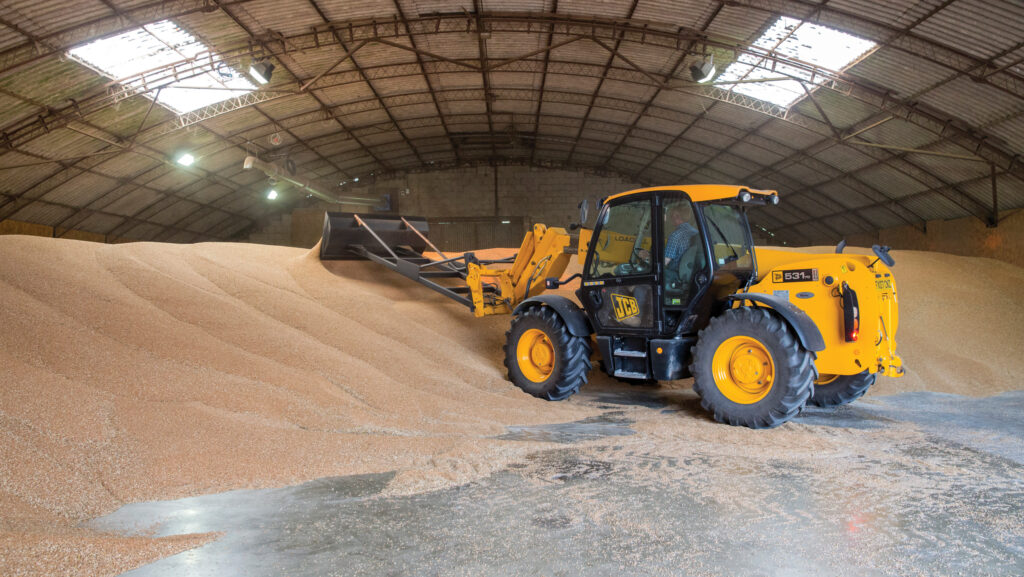Wheat markets remain lacklustre despite small UK crop
 © GNP
© GNP Domestic wheat markets have shown little momentum during October, with prices still bearish despite both Defra and the AHDB estimating a smaller than expected crop.
UK wheat futures opened at £167.45/t on 15 October for the November contract, with markets appearing to have stabilised and trading broadly in line with month earlier levels.
Crop-trading platform Hectare reported that milling wheat premiums have fallen in recent weeks, driven by abundant supplies and high quality levels.
See also: Milling wheat premiums slide as global quality increases
A weaker sterling has provided some modest support during the past week, however market fundamentals are still reported as overwhelmingly bearish.
Global markets are experiencing heightened uncertainty at present with the US Department of Agriculture suspending publications, including its World Agricultural Supply and Demand Estimates report.
Merchants at Dewing Grain note that global wheat stocks are ample, export demand is sluggish, and ongoing trade uncertainty continues to weigh on sentiment.
Nonetheless, any weather disruption to crops in the southern hemisphere could offer short-term support to markets.
UK cereals crop
England has had one of its worst harvests on record, with Defra’s provisional wheat crop putting it at just 10.6m tonnes, a 4.9% increase on last year’s all-time low.
While the area of wheat planted for 2025 was up 9% on the previous year, the spring and summer drought brought yields back to just 7t/ha.
These yield estimates are all lower than figures suggested by the AHDB, which had previously put the wheat crop in England at 7.6t/ha, winter barley at 6.7t/ha, and spring barley at 5.8t/ha.
Cecilia Pryce, head of research at Openfield, noted that Defra’s figures showed a continued decline in
the combined wheat, barley and oilseed rape area.
Ms Pryce said: “The SFI [Sustainable Farming Incentive] will have taken land out alongside solar panels and other schemes, it’s a reminder of just how agriculture is changing.
“Global crop prospects continue to apply pressure to values, while many farmers are struggling to cover overheads.”
Tom Lancaster from the Energy and Climate Intelligence Unit highlighted that extreme weather had caused three of the five worst harvests on record this decade, reflecting escalating climate impacts that farmers are struggling to cope with.
He added: “It should now be an urgent priority for government and business to support farmers to adapt to these extremes and build their resilience by investing in healthier soils and more climate and nature-friendly farming.”
Barley
Defra’s provisional estimate for the 2025 English barley harvest is 4.2m tonnes, representing a 14% decline compared with 2024.
Although winter barley yields increased by 5.3% to 6.5 t/ha, the overall impact was offset by an 8.1% decline in spring barley yields to 5.0 t/ha.
Monitor Farm Scotland programme manager Grace Reid said dry weather meant some spring barley crops failed to make malting quality because of high screenings and elevated nitrogen levels.
She said: “Combined with low commodity prices, these challenges are putting further pressure on farm cashflow and raising concerns for many growers when planning for the years to come.”
Zach Reilly, agronomist at Scottish Agronomy, added: “Many farmers will be facing lower incomes or still have a shed of barley that they have to get rid of.
“Now people are starting to look at buying spring inputs these issues will have a massive knock-on effect. The biggest problem for many will be cashflow.”
The numbers
- £167.45/t UK feed wheat futures on 15 October for the November contract
- 10.6m tonnes English 2025 wheat crop (Defra provisional estimate)
- 4.2m tonnes English 2025 barley crop (Defra provisional estimate)
